
The Custom House is a neoclassical 18th century building in Dublin, Ireland which houses the Department of Housing, Local Government and Heritage. It is located on the north bank of the River Liffey, on Custom House Quay between Butt Bridge and Talbot Memorial Bridge.

Dolores Mary Eileen O'Riordan was an Irish musician who was the lead vocalist and lyricist of the alternative rock band the Cranberries. One of the most recognisable voices in rock in the 1990s, she was known for her lilting mezzo-soprano voice, signature yodel, emphasized use of keening, and strong Limerick accent.

As with other cities in Ireland, Limerick has a history of great architecture. A 1574 document, prepared for the Spanish ambassador, describes some of the wealth and architecture in the city:
The architecture of Ireland is one of the most visible features in the Irish countryside – with remains from all eras since the Stone Age abounding. Ireland is famous for its ruined and intact Norman and Anglo-Irish castles, small whitewashed thatched cottages and Georgian urban buildings. What are unaccountably somewhat less famous are the still complete Palladian and Rococo country houses which can be favourably compared to anything similar in northern Europe, and the country's many Gothic and neo-Gothic cathedrals and buildings.
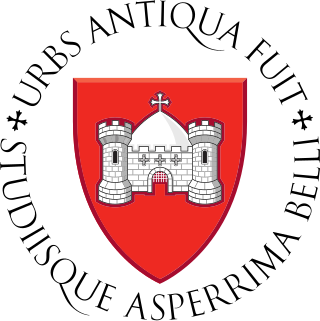
Limerick City Council was the local authority of the city of Limerick in Ireland. The council had 17 elected members. The head of the council had the title of mayor. Limerick City Council was the smallest local government area in Ireland by area (20.35 km2) and 30th in terms of population. It was abolished in 2014 when the Local Government Reform Act 2014 was implemented. It was succeeded by Limerick City and County Council.
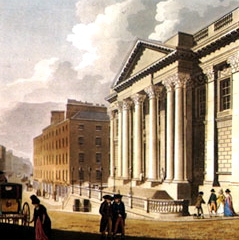
Thomas Cooley (1740–1784) was an English-born Irish architect who came to Dublin from London after winning a competition for the design of Dublin's Royal Exchange in 1768.

Bachelors Walk is a street and quay on the north bank of the Liffey, Dublin, Ireland. It runs between Liffey Street Lower and O'Connell Street Lower and O'Connell Bridge. It was the setting for an eponymous TV series in the early 2000s.

The Dublin quays refers to the two roadways and quays that run along the north and south banks of the River Liffey in Dublin, Ireland. The stretches of the two continuous streets have several different names. However, all but two of the names share the same "quay" designation. The quays have played an important part in Dublin's history.
George Richard Pain was born into a family of English architects. His grandfather was William Pain, his father James Pain and his brother also James. George Richard served as an apprentice architect to John Nash of London. George Richard and James were commissioned by the Board of First Fruits to design churches and glebe houses in Ireland. He settled in Cork, Ireland. Many of his designs were produced in collaboration with his brother James Pain who practiced in Limerick.
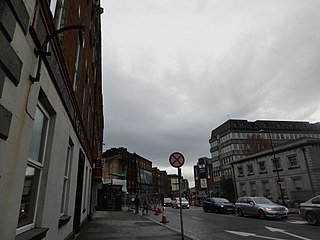
Rutland Street is a street in central Limerick, Ireland that forms part of the main central thoroughfare of the city which incorporates Rutland Street, Patrick Street and O'Connell Street. Named after the 4th Duke of Rutland, Charles Manners, who was appointed Lord Lieutenant of Ireland in 1784 and visited Limerick in 1785. Rutland Street along with nearby Bank Place features some of Limerick's earliest examples of Georgian Architecture. It was the first street developed as part of Edmund Sexton Pery's plans for Newtown Pery, and was the first part of the great Georgian expansion of Limerick south from the medieval city. In 1901, Irish nationalists suggested renaming the street to Hugh O'Neill Street.

Holy Trinity Church, also known as Father Mathew Memorial Church, is a Roman Catholic Gothic Revival church and friary on Fr. Mathew Quay, on the bank of the River Lee in Cork. It belongs to the Order of Friars Minor Capuchin and is the only church dedicated to Father Theobald Mathew.
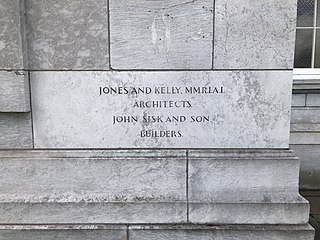
The City Hall, Cork is a civic building in Cork, Ireland which houses the administrative headquarters of Cork City Council.
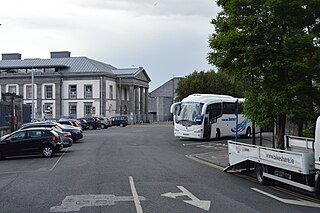
Limerick Courthouse is a judicial facility at Merchant's Quay, Limerick, County Limerick, Ireland.
William Henry Byrne was an Irish architect who mainly designed churches. He studied under James Joseph McCarthy before going into business with John O’Neill in 1869. He worked on his own after O'Neill's death in 1883.

Hawkins Street is a street in central Dublin, Ireland. It runs south from Rosie Hackett Bridge, at its junction with Burgh Quay, for 160 metres (170 yd) to a crossroads with Townsend Street, where it continues as College Street.

The Guilds of the City of Dublin were associations of trade and craft practitioners, with regulatory, mutual benefit and shared religious purposes. In their eventual number they were sometimes called the "25 minor corporations", in contrast to the city's principal authority, the Dublin Corporation). They operated in various forms from near the time of the Norman invasion of Ireland - the Merchants’ Guild existed in some form by 1192 - until the mid-19th century, and a few of which have descendent operations to the present day.
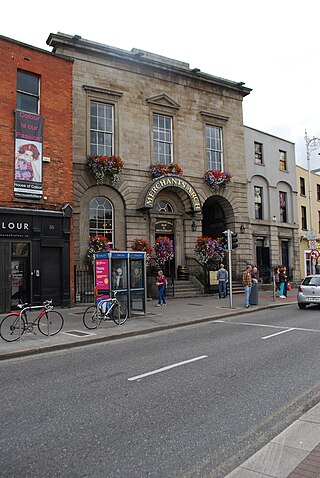
Merchants' Hall is a former 19th century guildhall, now a protected structure, on Wellington Quay in Dublin, Ireland. It is located opposite the Ha'penny Bridge and backs on to Temple Bar. The building was the last of the city guildhalls to be constructed and only operated as a guildhall for a period of 20 years before ceasing as the Merchants' Guild ended its main work, along with the other Guilds of the City of Dublin.















